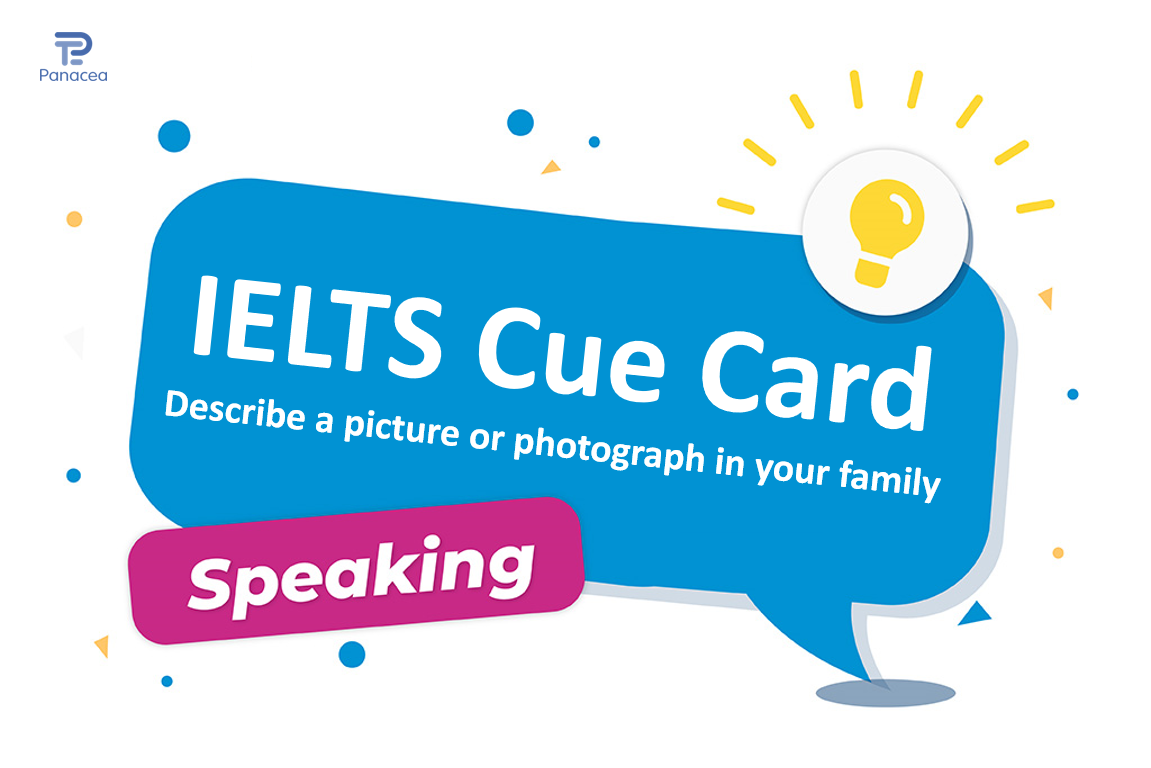Describe a picture or photograph in your family
Learn how to describe a family photograph for the IELTS Speaking test with tips, examples, and follow-up questions to make your response engaging and personal.

Learn how to describe a family photograph for the IELTS Speaking test with tips, examples, and follow-up questions to make your response engaging and personal.
Alright, let’s talk about family photographs—because, let’s be honest, they’re more than just images; they’re frozen moments of love, laughter, and sometimes even chaos. If you’re preparing for the IELTS Speaking test, you might come across a cue card like “Describe a picture or photograph in your family.” Sounds simple enough, right? But how do you make it engaging and personal? Let’s break it down with some examples that feel like we’re just chatting over a cup of tea. No robotic stuff here—just real, relatable stories.
The IELTS Speaking Test: Keep It Real
First off, the IELTS Speaking test is essentially a conversation. In Part 2, you’ll get a cue card, a minute to prepare, and then 2 minutes to speak. The key is to keep your response personal and vivid. Think of it as sharing a memory with a friend. Let’s dive into how you can describe a family photograph in a way that feels authentic and captivating.
You should say:
· What is in the photo?
· Where is this photo in your home?
· How was this picture taken?
· And explain why this photo is special to you.
What is in the photo?
One of the most cherished photographs in our family is from my sister’s wedding, which holds immense sentimental value for me. The picture captures the entire family together in a beautiful moment of unity and joy. It was taken during the wedding ceremony, and it features not just my immediate family members, but also my grandparents, brothers, and parents.
Where is this photo in your home?
This photo is framed and proudly displayed on the front wall of our dining room, where we can see it every day. It’s in a full-frame size, which makes the image even more captivating. I remember that day vividly.
How was this picture taken?
The picture was clicked by a professional photographer who captured the essence of the wedding—our smiles, the colours, the laughter, and the warmth of the occasion.
And explain why this photo is special to you.
What makes this photograph so special to me is that it was the last time our entire family was together for such a joyful moment. Unfortunately, shortly after this event, my grandfather passed away, and his absence has left a deep void. When I look at this picture, I’m reminded of his calm, peaceful presence, and the fulfilment that came from having everyone close. It represents not just a milestone in my sister’s life but a moment when our family was united in love and happiness. This photograph, with all its layers of emotion, will forever be a treasured memory for me.
How important is it for families to preserve and share photographs?
Preserving and sharing family photographs is vital as they serve as visual records of our history and identity. They capture meaningful moments and traditions for future generations. Photographs help individuals connect with their heritage, instilling a sense of pride and belonging. Sharing these images also strengthens emotional bonds among family members, offering opportunities for storytelling and creating shared narratives. In a digital age, physical photos provide lasting connections to the past. Ultimately, preserving family photos ensure that memories, values, and family legacies are passed down, fostering connections between generations and enriching familial relationships.
In what ways do family photographs contribute to the emotional bond within a family?
Family photographs significantly enhance the emotional bonds within a family by immortalizing key moments that reflect shared experiences. These images act as tangible connections to past events, preserving the essence of joyful occasions, milestones, and even challenges faced together. When revisited, they often evoke profound feelings of nostalgia, triggering emotions like love, happiness, and gratitude. The emotional resonance of these photographs is further deepened through storytelling, as family members recount the stories behind each image, fostering a richer understanding and mutual appreciation. In this way, these pictures solidify the family’s sense of unity, continuity, and collective history.
Do you think there are any drawbacks to relying heavily on photographs to preserve family memories?
While photographs are valuable for preserving family memories, they have limitations. They capture moments but often miss the depth of emotions, stories, and context behind them. Relying too heavily on photos can overlook other forms of memory preservation, like written accounts or video recordings, which provide richer, more comprehensive perspectives. Additionally, the focus on taking perfect pictures might interfere with enjoying the moment itself. Physical photos can also deteriorate, and digital ones may be lost due to technical issues. Therefore, it’s important to balance photographs with other means of preserving family memories for long-term significance.
How would you describe an image to a friend?
If I am describing an image to a friend, I’d focus on the details and scene to help them picture it clearly. For example, I might say, “I came across this beautiful photo I have to share! It’s a warm, inviting moment in a garden surrounded by autumn hues. In the foreground, there’s a wooden bench with four people seated—my grandmother, grandfather, mom, and uncle—all smiling and looking completely at ease. It feels like a perfect capture of family harmony, set against the backdrop of nature’s vibrant beauty.”
Describe an invention that is useful in daily life
Describe a crowded place you have been to
Describe a product you bought, but returned
Describe a successful businessperson you know